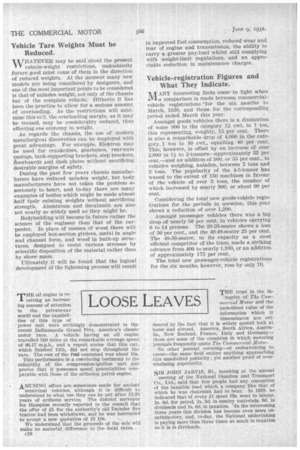Vehicle Tare Weights Must be Reduced.
Page 40

If you've noticed an error in this article please click here to report it so we can fix it.
WHATEVER, may be said about the present vehicle-weight restrictions, undoubtedly future good must come of them in the direction. of reduced weights. At the moment many new models are being considered by designers, and one of the most important points to be considered is that of unladen weight, not only of the chassis but of the complete vehicle. Hitherto it has been the practice to allow for a serious amount. (V overloading. As the restrictions will minimize this evil, the overloading margin, as it may be termed, may be considerably reduced, thus effecting one economy in weight.
As regards the chassis, the use of modern metallurgical discoveries can be employed with great advantage. For example, Elektron may be used for crankcases, gearboxes, rear-axle casings, tank-supporting bracket, step brackets, iloorboards and dash plates without sacrificing desirable margins of safety.
During the past few years chassis manufacturers have reduced unladen weight, but body manufacturers have not taken the problem so seriously to heart, and to-day there are many examples of bodies which might be made almost half their existing Weights without sacrificing strength. Aluminium and duralumin are also not nearly so widely used as they might be.
Bodybuilding will become in future rather the science of the engineer than that of the carpenter. In place of masses of wood there will be employed box-section girders., metal in angle and channel form, and wood in built-up structures, designed to resist various stresses by scientific disposition of the material rather than by sheer. mass.
Ultimately it will be found that the logical 'development of the lightening process will result in improved fuel consumption, reduced wear and tear of engine and transmission, the ability to carry a greater pay-load whilst still complying with weight-limit regulations, and an appreciable reduction in maintenance charges.












































































































